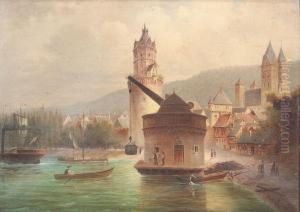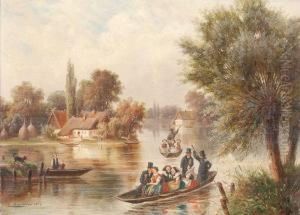Wilhelm Wollschlager Paintings
Wilhelm Wollschlager was a notable figure in the realm of art, born in 1864 and leaving a lasting legacy until his death in 1946. His life spanned a period of significant historical events and transitions in the art world, from the late 19th century into the mid-20th century, witnessing the evolutions from Romanticism to Modernism. While not as widely recognized as some of his contemporaries, Wollschlager's contributions to the art world are nonetheless appreciated by those who delve into his works and the context in which they were created.
Wollschlager was known for his meticulous approach to art, often focusing on landscapes and portraits. His works are characterized by a keen attention to detail and a profound appreciation for the natural world, elements that were increasingly resonant during a time of rapid industrialization and urban expansion. He was adept at capturing the subtleties of light and shadow, employing techniques that allowed his paintings to emanate a sense of tranquility and timelessness. Despite the shifting trends in art during his lifetime, Wollschlager remained true to his stylistic preferences, straddling the line between traditional realism and the emerging impulses of impressionism.
Throughout his career, Wilhelm Wollschlager engaged with various artistic communities, contributing to exhibitions and sharing his insights with fellow artists. However, the specifics of his interactions and the extent of his influence during his lifetime remain somewhat obscure, overshadowed by the luminaries of his era. Nonetheless, posthumous evaluations of his work have led to a rekindled interest in his artistic contributions, highlighting his ability to capture the essence of his subjects with both precision and emotion.
Wollschlager's legacy is one of dedication to the craft of painting, an exemplar of the artist's commitment to portraying the world with both accuracy and artistic sensitivity. His death in 1946 marked the end of a career that, while not celebrated in mainstream art historical narratives, offers valuable insights into the nuanced and often overlooked corners of the art world. Today, scholars and enthusiasts alike continue to explore Wollschlager's work, recognizing in it a unique blend of technical skill and emotive power that speaks to the enduring capacity of art to connect with the human experience.

